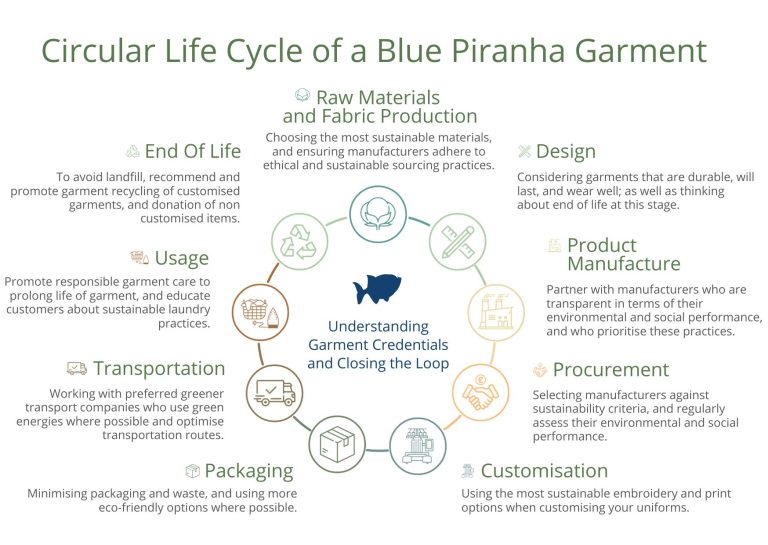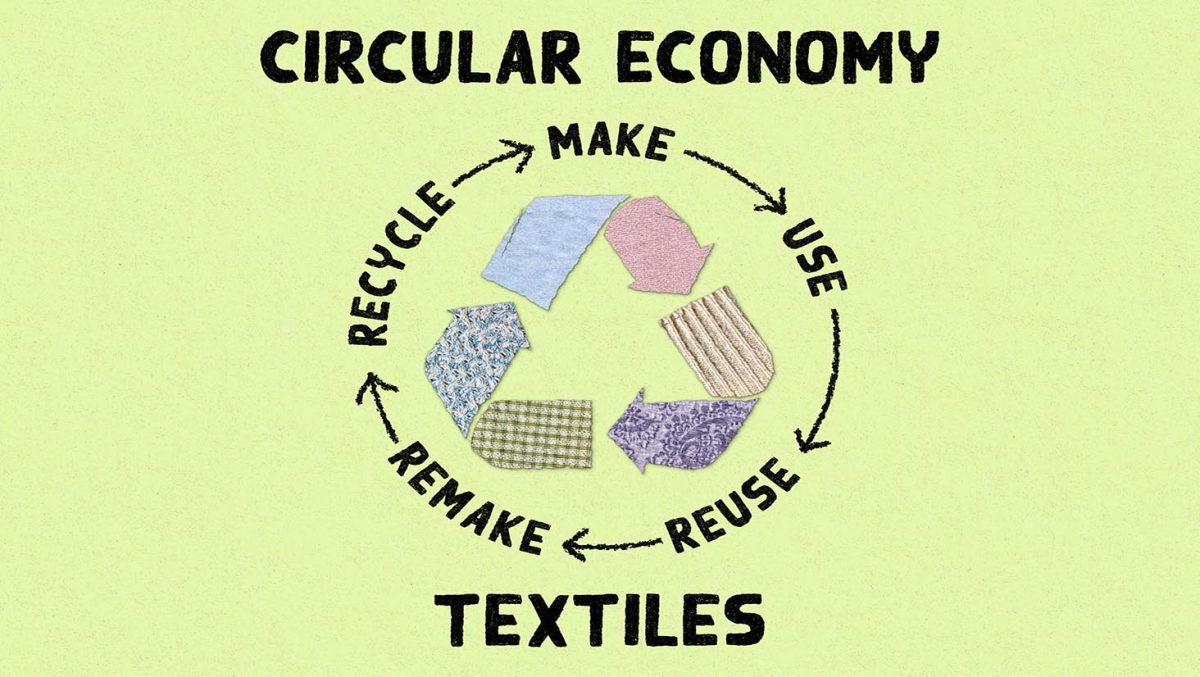Understanding the Circular Economy
The concept of a circular economy challenges the conventional linear model which is so very prevalent in the fashion industry. Under a circular economy, the focus is on minimising waste and maximising resources by keeping products and materials in use for as long as possible. It’s a system designed to ensure that materials are reused, repurposed, and recycled, thereby reducing the strain on the environment.
In contrast, the linear economy that the fashion industry predominantly operates on follows a simple “take-make-waste” route. This linear model drives a culture of fast fashion, characterised by rapid production, consumption, and disposal of clothing. Unfortunately, this system leads to extensive environmental degradation and an alarming accumulation of textile waste.
Linear vs Circular: The Fashion Industry’s Dilemma
Garments that have gone to landfill rather than being reused or recycled.
Within the linear economy of fashion, the numbers tell a concerning story. The industry is the second most polluting globally, emitting 10% of the world’s carbon emissions. It’s estimated that over 360,000 tonnes of clothing end up in UK landfills annually, with a mere 1% being recycled. The cycle of “make-use-dispose” perpetuates environmental harm, consuming vast amounts of water and contributing significantly to pollution.
The linear model’s unrelenting pace, focused on producing cheap, disposable garments, results in overconsumption and massive textile waste. The consequences extend beyond environmental impact, affecting social and ethical facets, including the exploitation of labour and the disregard for fair working conditions.

The Importance of a Circular Life Cycle
The paradigm shift to a circular life cycle becomes crucial within this context. It involves reimagining the entire trajectory of clothing—from how it’s produced and used to what happens at the end of its life. This approach necessitates a commitment to sustainability, challenging businesses to rethink every step of their supply chain and consumer behaviour.
The workwear industry faces specific challenges during a garment's end-of-life phase due to customisations like embroidery and print. These customisations, while enhancing brand identity during the garment’s active life, raise concerns when it comes to securely recycling or repurposing these items at the end of their use.
Blue Piranha’s Commitment to Sustainability
Blue Piranha recognises these challenges and has proactively sought solutions. Partnering with Avena, a recycling expert specialising in securely disposing of customised garments, they’ve addressed the security concerns surrounding branded uniforms’ end-of-life. The innovative partnership ensures that even personalised workwear is responsibly recycled, reducing waste and contributing to a more sustainable future.
Inspired by the principles of the circular economy, advocated by organisations like the Ellen MacArthur Foundation, our commitment to sustainable practices aligns with their mission to drive systemic change.

The Circular Life Cycle of a Blue Piranha Garment
Navigating Towards a Sustainable Future
The commitment to the circular life cycle isn’t just a choice; it’s an imperative step towards a more sustainable future. By championing the circular economy, Blue Piranha isn’t just redefining workwear—they’re working towards impacting positive change in the industry. Their dedication to sustainable practices marks a pivotal moment, encouraging others to follow suit.
Join the Movement
Your choices matter. Whether as a consumer or a business owner, every decision contributes to shaping the future of fashion.
Embrace sustainable practices and support brands like Blue Piranha leading the charge towards a circular economy in fashion. Together, we can steer the industry towards a future where waste is minimized, resources are conserved, and garments have a lasting impact.
References:




